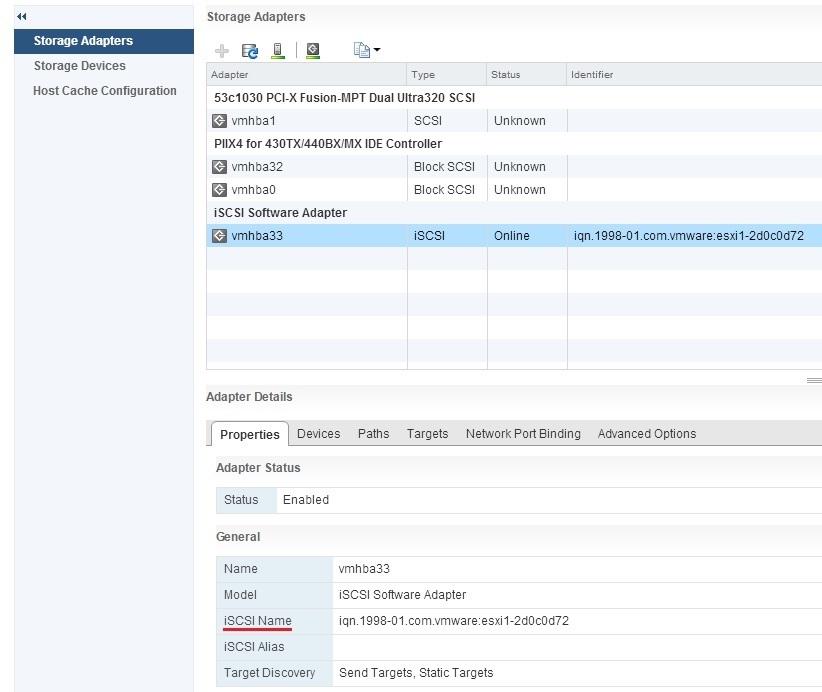iSCSI naming and addressing
An iSCSI node (which can be either a target or an initiator) is identified by a unique name so that storage can be managed regardless of address. iSCSI names are formatted in two different ways:
1. iSCSI qualified name (IQN)
Takes the form iqn.yyyy-mm.naming-authority:unique-name, where:
- iqn – the prefix iqn.
- yyyy-mm – the year and month when the naming authority was established. For example: 1992-08.
- naming-authority – the organizational naming authority string, usually reverse syntax of the Internet domain name of the naming authority. For example: com.vmware.
- unique name – any name you want to use, such as the name of your host. For example: host-1.
2. Enterprise Unique Identifier (EUI)
The EUI format takes the form eui.16-hex-digits, where:
- eui – the prefix eui.
- 16-hex-digits – the textual representation of a 64-bit number of an IEEE EUI (extended unique identifier) format. First 24 bits represent the company name assigned by the IEEE. The last 40 bits represent a unique ID assigned by the entity holding that company ID. For example: eui.5412369875AACDAF.
You can display the iSCSI name assigned to your iSCSI adapters using the vSphere Web Client. To do this, select your ESXi host in the Inventory and go to Manage > Storage. Under Storage Adapters, select your iSCSI software adapter. You should the the iSCSI name under Adapter status:




